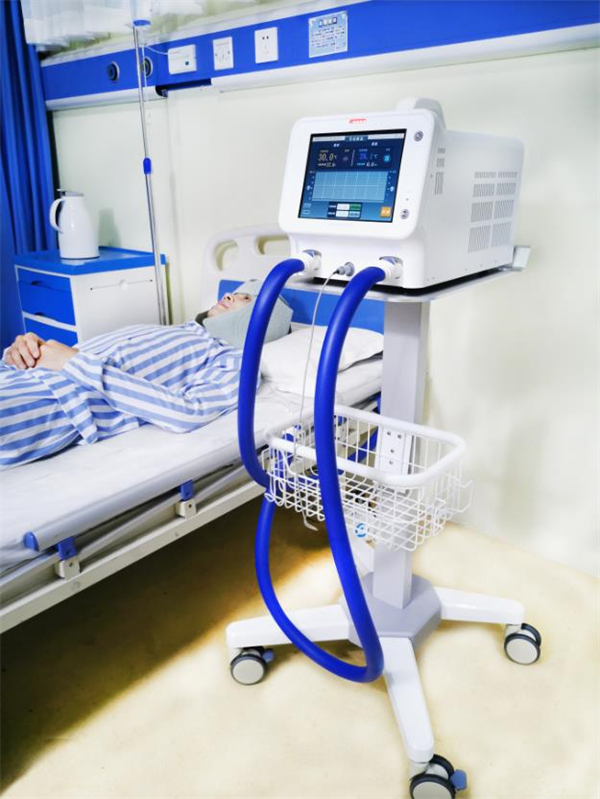Company News
Beware of "heat stroke" in the hot summer. What are the symptoms of heat stroke and how to treat it?
What is heat stroke?
Thermal damage factors act on the body and can cause a series of pathophysiological changes, which are manifested as a continuous process from mild to severe, including premonitory heatstroke, mild heatstroke and severe heatstroke, collectively referred to as heat-induced diseases. Heat stroke is the most severe type of heat-induced illness and has a high mortality rate. Heat stroke is an imbalance in the bodys heat production and heat dissipation caused by exposure to thermal environments and/or strenuous exercise. It is characterized by an increase in core temperature >40°C and abnormalities in the central nervous system, such as changes in mental status, convulsions or coma, and A life-threatening clinical syndrome with multiple organ damage.
Heat stroke classification:
According to the different causes and susceptible groups, heat stroke is divided into classic heat stroke (CHS) and exertional heat stroke (EHS).
CHS is mainly caused by the imbalance of heat production and heat dissipation in the body caused by passive exposure to thermal environment. CHS is common in young people, pregnant women, the elderly and infirm, or individuals with chronic underlying diseases or compromised immune function.
EHS is mainly caused by the imbalance between heat production and heat dissipation in the body caused by high-intensity physical activity. EHS is common in healthy young people who exercise strenuously in the summer, such as officers and soldiers, athletes, firefighters, construction workers, etc. who participate in summer training. Although EHS is more likely to occur in high temperature and high humidity environments, the environmental conditions are not required.
Heat stroke classification:
According to the different causes and susceptible groups, heat stroke is divided into classic heat stroke (CHS) and exertional heat stroke (EHS).
CHS is mainly caused by the imbalance of heat production and heat dissipation in the body caused by passive exposure to thermal environment. CHS is common in young people, pregnant women, the elderly and infirm, or individuals with chronic underlying diseases or compromised immune function.
EHS is mainly caused by the imbalance between heat production and heat dissipation in the body caused by high-intensity physical activity. EHS is common in healthy young people who exercise strenuously in the summer, such as officers and soldiers, athletes, firefighters, construction workers, etc. who participate in summer training. Although EHS is more likely to occur in high temperature and high humidity environments, the environmental conditions are not required.
Causes of heat stroke:
Climatic factors of high temperature and humidity and high-intensity physical activity are the main risk factors for heat stroke.
CHS is mainly caused by high temperature and/or high humidity environmental factors, usually without strenuous physical activity. Individuals with impaired body temperature regulation function are more susceptible to the disease, such as infants and young children, the elderly, patients with chronic underlying diseases, long-term bedridden and obese patients, etc. . The susceptibility factors to EHS vary greatly. It is still not possible to answer why some individuals become sick when exposed to the same environment, but others around them do not. For the same individual, even if they have been exposed to similar environments many times before, EHS may occur when exposed again. Through a review and analysis of EHS cases in the Chinese military, it was found that dehydration, insomnia, psychological stress, basic diseases, lack of physical fitness, obesity, acute inflammatory reactions before training (such as colds, diarrhea, etc.), and insufficient heat adaptation before training may be the causes. Susceptibility factors to the onset of EHS.
Manifestations of heat stroke:
The heat source of CHS mainly comes from the external environment (such as heat waves). It is seen in the elderly, young, frail and patients with chronic diseases. It usually starts gradually. Prodromal symptoms are difficult to detect. Symptoms worsen in 1 to 2 days, with confusion, delirium, coma, etc., and body temperature rising to 40 to 42°C, often accompanied by manifestations such as incontinence, heart failure, and renal failure.
EHS is seen in healthy young people (such as military officers and soldiers, athletes, firefighters, construction workers, etc.) who suddenly feel general discomfort after performing high-intensity training or engaging in heavy physical labor in a high temperature and high humidity environment for a period of time, such as extreme fatigue, persistent headache, Uncoordinated movements, inappropriate behavior, impaired judgment, flushed or pale complexion, nausea, vomiting, syncope, etc., which may be accompanied by heavy sweating or no sweating, followed by a rapid rise in body temperature above 40°C, delirium, epilepsy, and unconsciousness. Symptoms of severe damage to the central nervous system include decreased blood levels and coma. There are also patients who lack aura and suddenly faint or lose consciousness during exercise.
clinical diagnosis:
Medical history information:
①Exposed to high temperature and high humidity environment;
② High-intensity exercise.
Clinical manifestations:
① Manifestations of central nervous system dysfunction (such as coma, convulsions, delirium, abnormal behavior, etc.);
②The core temperature exceeds 40℃;
③Multiple organ (≥2) functional damage manifestations (liver, kidney, striated muscle, gastrointestinal, etc.);
④Severe coagulation disorder or DIC.
The diagnosis of heat stroke should be considered when any one of the medical history information plus any one of the clinical manifestations cannot be explained by other reasons.
On-site first aid:
Key points for on-site treatment of heat stroke patients:
①Quick, effective and continuous cooling;
② Rapid rehydration and volume expansion;
③Effectively control restlessness and convulsions, among which rapid, effective and continuous cooling is the most important.
In view of the severe and rapid progression of heat stroke, the principle of "cooling and transporting at the same time" is recommended in early on-site treatment . When there is a conflict between cooling and transport, the principle of "cooling first, transporting second" should be followed.

Shurui Medical Temperature Controller realizes pre-hospital and inter-hospital transport, allowing for cooling and transport at the same time. The device comes with a lithium battery to meet clinical needs.
Transshipment and delivery:
For patients with confirmed or suspected heat stroke, they should be transported as soon as possible after on-site treatment and sent to the nearest hospital with treatment experience to obtain higher-level treatment.
Rapid, effective, and continuous cooling is the primary measure for the treatment of heat stroke. Even if the patient is transported for evacuation, effective and continuous cooling should be achieved during the transport and evacuation process.
In-hospital treatment:
Targeted temperature management (TTM) refers to a therapeutic strategy to achieve and maintain a specific core temperature in a special patient population to improve clinical prognosis.
In recent years, people have gradually realized the importance of accurate body temperature management in the treatment of critically ill patients. For heat stroke, precise body temperature management is particularly important, requiring continuous implementation of TTM throughout hospitalization. All patients admitted to the hospital with heat stroke require immediate core temperature measurement. For patients who have implemented cooling therapy at the scene and during evacuation, if the core temperature is still higher than the target temperature, cooling therapy should be continued in the hospital; if the core temperature has reached the target temperature on admission, the body temperature should still be continuously monitored to avoid overheating Too low or rising again.
Shurui Medical-Medical Thermostat:
Shurui Medicals new generation of intelligent medical temperature controller is a new type of equipment recommended by ICU and neurological critical care guidelines with a patient temperature feedback control system. It is not only a cooling tool but also a target body temperature management tool, realizing a complete TTM treatment plan and achieving precision. Temperature control management.

Literature source: Chinese Expert Consensus on the Diagnosis and Treatment of Heat Stroke (2019)
